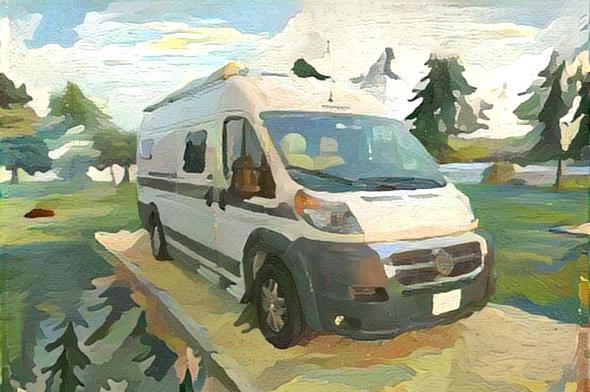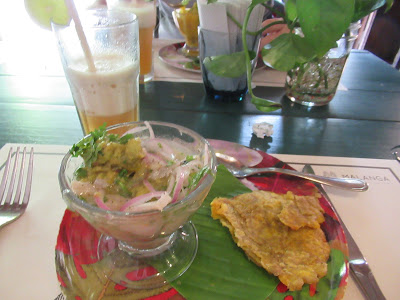We are often asked what cities we have visited during our time in Colombia. Well, since learning Spanish is our priority this first time around, we have been sticking close to our Spanish classes in Medellín. But I am curious about favorite local vacation spots, and the first response is always ...
¨Visit Cartagena!¨
Well, our time in Colombia is quickly coming to an end, and we felt that we needed to put our Spanish lessons to a practical test! Come along as we explore La Ciudad Amurallada (Walled City) of Cartagena, a historically and culturally important city that lies along the Caribbean coast in northern Colombia.
Airfare is fairly reasonable between cities in Colombia, so we were able to fly round trip from Medellin for about $60 each. We found a basic apartment through Airbnb that was a five minute walk to the historical district for about $30 a night. The trickiest part about keeping the cost of this trip down was to try to successfully avoid the deluge of persistent street vendors trying to sell us everything from hats to purses to artwork to emeralds.
Founded in 1533, Cartagena quickly became a major port for trade and was strategically important for the defense of the lands claimed by the Spanish crown. Great deposits of gold, silver and gems were also found in the area, and so Cartagena also became a target of frequent pirate attacks. Because of this, a massive wall was built around the city beginning in the late 1500s and completed in stages over the course of the next 200 years. This wall and the city that it protected has become an important historical and cultural center as well as a popular tourist destination.
Highlights of our four day visit to Cartagena
After a short taxi ride from the Cartagena airport, we checked into our apartment and changed into some ¨cooler¨ clothes. Yes, our friends' warnings were true. Cartagena is very hot and humid all day ... every day. It was a short walk to the Walled City historical district, where we found a feast for our eyes. Brightly colored buildings lined the streets as beautiful flowers cascaded off the balconies. In the city squares we got our first ... and certainly not our last ... exposure to the many vendors eager to sell their hats, headbands and more. Doug reminded me that it is a good thing that I collect ¨experiences¨ and not ¨things¨, as I admired all the crafts. We enjoyed a late lunch in one of the numerous restaurants that vie for the tourist peso and finished our inaugural tour of the Old City with Sunday Mass at one of the five majestic churches that are located within the walls.
The next morning while walking along the beach, we came upon a crew of hardworking fishermen pulling in their nets. The overflowing catch of fish would become the main ingredient that defines Cartagena cuisine. Later that day we tried the fish in the signature dish of Cartagena ... Ceviche. Not sure that I am a fan of the raw fish dish marinated in lime juice, but the spices definitely added a little ¨kick¨ that made it stand out from the usual Colombian diet.
Doug made it through another history lesson during the Cartagena ¨Free¨ Walking Tour. (Reward to come as soon as he hunts down a brewery.) Juan, our guide earned his tips as he filled us in on the tales of yesteryear in Walled City. We walked past city plazas, monuments, and patio gardens as Juan shared narratives of the people and experiences that give Cartagena its charm.
The next day we took a walk through the urban neighborhoods that surround the Walled City to the charming home of Juliana for a Caribbean cooking lesson. During our three hour class and lunch, we learned the secret to easily draining and cracking open a coconut in order to use its sweet inner flesh to make coconut milk ... the ¨critical¨ ingredient for the delicious coconut rice that accompanied the catfish dish. Homemade patacones and hogao and fresh avocado rounded up the traditional Caribbean lunch.
On our way back, we headed east up the hill to check out Castillo San Felipe de Barajas. The stone fortress protected the ancient city and harbor in days past. Today it provided spectacular views and just a bit of cool shade as we explored its maze of tunnels.
Our third day we decided to walk along the beach that connects the Walled City to the modern city of Cartagena. We stayed mainly on the edge of the beach, because every time we ventured onto the beach, we were bombarded by vendors wanting to rent us a beach tent, give us a massage, or sell us some of their trinkets. Towards the end of Bocagrande Beach, we thought that we found a quiet spot where we sat down to enjoy a cold drink. Well, before I knew what was happening, a very nice young lady was taking off my shoes in order to give me ¨un masaje gratis¨ (a free message), I knew that this ¨massage¨ would not turn out to be free, but nonetheless, it ended up being a great Cartagena ¨souvenir¨. Our 20 minute conversation in Spanish provided good ¨listening practice¨ for me. I enjoyed the opportunity to find out about everyday life in Cartagena. So as the saying goes:
- Club Colombia cerveza ... 5,000 pesos ($1.58)
- Twenty minute foot massage ... 40,000 pesos ($12.65)
- Spanish lesson and cultural talk with my new Colombian friend Jessica ... PRICELESS!
Did I mention that Cartagena is HOT??!! Well, Doug's brewery search was successful as he found a way to beat the heat with a cold beer and exciting ¨fútbol¨ game at the Bogotá Beer Company taproom that was tucked away in a quiet corner of the Walled City.
Sunset over the Caribbean Sea signals the end of another beautiful day and the promise of (slightly) cooler evening temps.
Temps perfect for walking around the Walled City and enjoying the magnificent architecture in a whole new light ... while reassuring us that our friends' recommendations were spot on.
Visit Cartagena??
Sure it's a hot and humid tourist mecca,
but it's also historical, enchanting, and certainly worth a visit!
Hasta luego ... Visit Cartagena and bring home great memories ... and enjoy all the adventures in your life!
















































